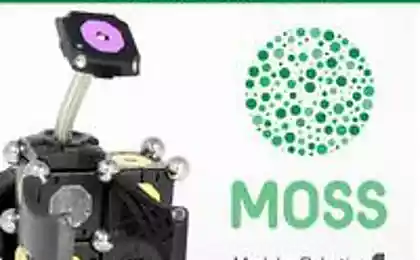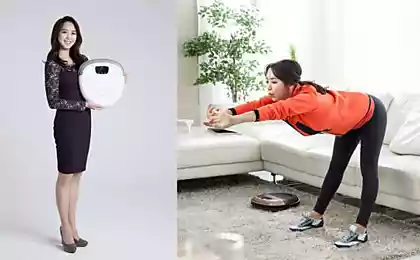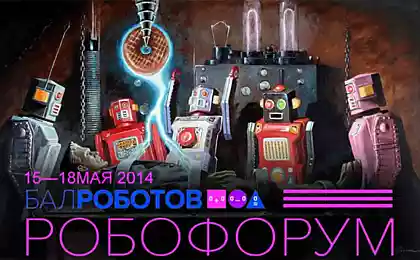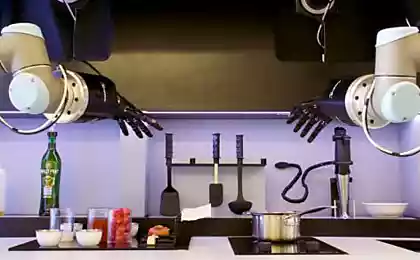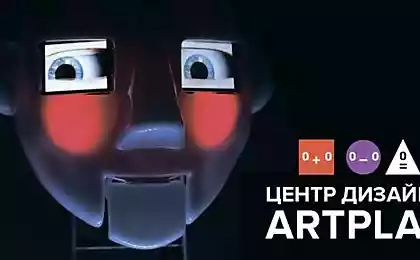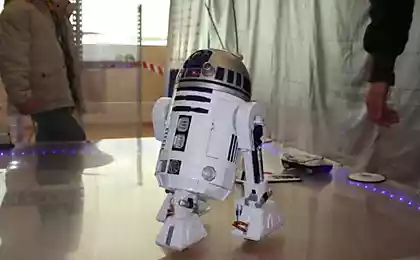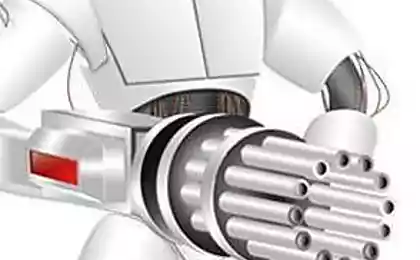1466
Test drive the robot vacuum cleaners
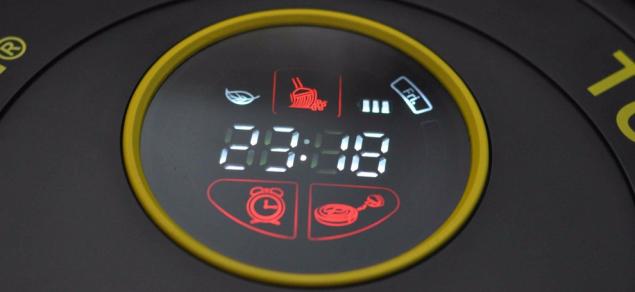
Robots, which can collect dust in a residential area, well out on the Russian market relatively recently, but already greatly evolved and without exaggeration have become the most common household robots in our country and around the world. However, since their introduction (2009) to the present day (2015) in a society tense debate about their usefulness and justification of such an acquisition. After all, the device has been, and remains quite expensive - its price, sometimes higher than the price of classical powerful vacuum cleaner for manual cleaning 3-4 times. What can be said about the power and the possibility in principle to collect dirt from the floor, as the robot is mobile and is powered by batteries that are at the current level of technology is not able to store energy in "kilowatt" scales available from the socket for conventional vacuum cleaners. Therefore, most often on the Internet, forums, and just in stores sound matters:
- The robot vacuum cleaner - a "elektrovenik" or this vacuum cleaner? em>
- He removed all or leaves large areas of unharvested? em>
- How good is it collecting dust wherever passed? em>
- What is its degree of intelligence to perform intelligent cleaning? em> em> Is automated dust collector is able to release the owner of the apartment or house from floor cleaning, or at least provide an opportunity to get out less? em>
I have to say the review was initially planned only a promising model of the French manufacturer TORNADO e.ziclean, an example of which was supposed to hold a principled assessment of the capabilities of the robot cleaner to implement the cleaning. But during the tests appeared irresistible interest if not excitement - check in any more devices of this category for a more holistic impression of the capabilities of the robots. This is supported and formed around a group of fans of individual producers who are ready around the clock to argue about the merits and shortcomings of a model of the other. As a result, added two more participants testing: very popular in Russia and Iclebo Arte Clever & Clean V-series, happened to be at our disposal. Based on the characteristics of these robots to get not just the comparison and confrontation of different structures and algorithmic concepts. I got off two brush vacuum cleaner with a single brush, chaotic motion mode with a serial map room, vacuum cleaners with a transverse brushes with respect to the motion will compete with a vacuum cleaner having a V-shaped arrangement.
Subsequently, we logically come to the need for a final chart with the results of objective measurements and characteristics of robots, simplifies device selection of future robotic pet. We plan to update it after each such test for the purpose of rating the efficiency and optimal ratio "price-quality" in the market robots. However, in this article a detailed review Iclebo Arte and Clever & Clean V-series has remained behind the scenes, as they have long been present in the market and review designs with the look enough, so these products were limited to only test program.
MECHANICS OF CLEANING h3>
Conventional vacuum cleaner, which is connected to a household power outlet, are nothing new. He is so firmly entered into the everyday life of a modern person is perceived as self-evident. Consider that different from his automatic cleaner.
Classic vacuum cleaner that can easily be found in any store of household appliances, collecting dust expense vacuum created by a powerful pump to pump a large volume of air through the suction part of the device. This is the air moving inside the vacuum cleaner with a relatively high velocity, carries away all that is on the floor or other surface to be cleaned. Inside the dust and dirt are retained by a filter, which may have very different design. In recent years become increasingly popular filter cyclone when polluted air is cleaned by means of the centrifugal force generated in a cylindrical tank when tightening the flow of air in a special way. It is very convenient, so do not do not need to buy additional bags of dust - you just need to throw away the dirt from the plastic container after cleaning. It was so constituted reference manual vacuum cleaner Electrolux, which we used for comparison with robotic vacuum cleaners.

Normal household vacuum cleaner Electrolux cyclone and 2200 W. em>
As an ordinary household vacuum cleaner is turned into a power outlet, then in fact have access to "unlimited" source of energy than actively enjoyed by all, without exception, manufacturers in the design of devices, as well as for marketing purposes. Vacuum cleaners with power cord have a high capacity, which confirms the non-competitive and our party - its capacity of 2, 2 kW.
And here there is the first feature on the market robots, designed for autonomous cleaning. The fact that the self-movement of the room with simultaneous cleaning robot will inevitably use the built-in battery. So get safe and relatively cheap for the reason that there is no need to provide an extremely complex and, therefore, expensive mechanisms to prevent tangling cables. When cleaning a classic vacuum cleaner, we usually do straighten the cable and make sure that it does not enter the suction zone or unplug the power cord. In the case of a robot today to do it very problematic that the final product did not cost hundreds of thousands of rubles. Therefore only battery! At the same time the average capacity of the built-in battery is 2 to 6 Ah. This stock is only enough to provide the suction power at the level of 30-50 watts. As a result, the only way to ensure a high cleaning efficiency - additional equipment rotating brush or a vacuum cleaner as it has become fashionable in recent years, two.
The second important difference from conventional robot vacuum cleaner - that's what it is cleaned alone and does not require human intervention. Here at the forefront of the device to navigate the space and cover the entire area without leaving uncleared areas to ensure maximum dust collection. This ability, in turn, depends on the sensor system, the computing block having or not having the opportunity to mapping the room and register in the memory areas that have been removed, to determine not cleaned the area and plan their consistent cleaning. Ironically, it is also important for a person with manual cleaning, since we tend to rush in the process of collecting dust, why not rare and omissions in the work of the conventional vacuum cleaner. The more interesting to find out the real effectiveness of different methods of collecting dust.
REVIEW robot cleaner TORNADO h3>
Product Overview start with the configuration. After opening the box, the buyer will direct the robot and everything that is necessary for its normal operation.

Complete set can be called higher than average. em>
In addition to the mandatory robot base for charging him with the power supply, instructions and tips-polisher, complete present: a set of replacement side brushes, Virtual Wall, console, making managing vacuuming more convenient and comfortable, and even a screwdriver.
We now turn his attention to design. Here, the developers have come up with a lot of interesting.

So TORNADO looks from above. em>

And from behind. Brushes rest on the floor and ready to work. Em>
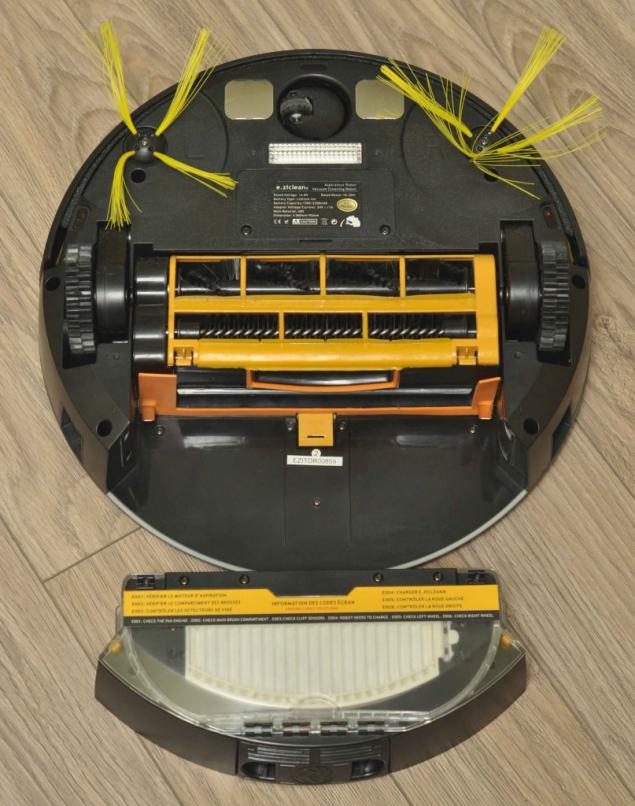
The design of the bottom of the vacuum cleaner. em>
Firstly, TORNADO is equipped with two brushes. One more, and is likely to collect larger impurities while the second - a more compact, apparently, to fines of dirt.

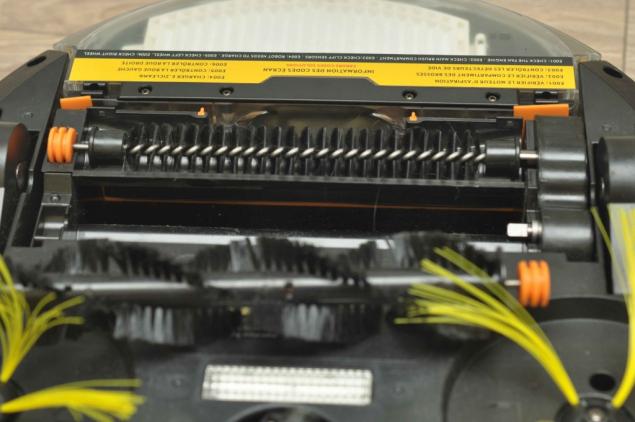
retrieved for cleaning brushes flick of the wrist. em>
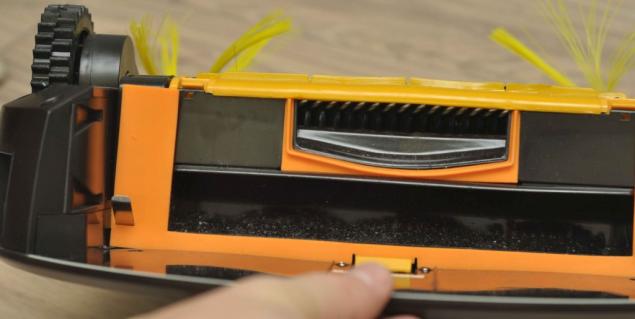
For each brush is provided a channel for the movement of contaminants in the container. em>
It is noteworthy that each brush works on a container compartment for collecting dust. The one that more - a wide channel from a large brush, and a very small compartment (a filter) for a narrow channel from the small brush.
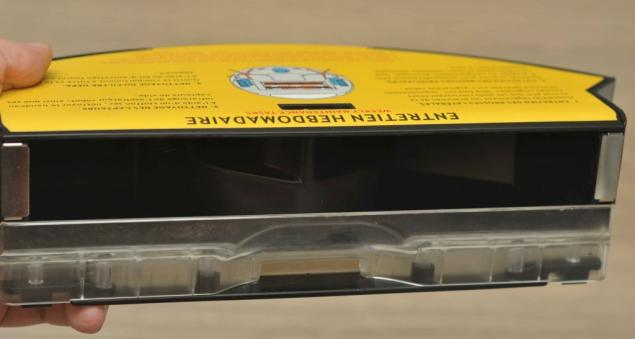
Removable dust tank with two containers. em>
The second major structural feature is a turbine pump. With its very compact size, it rotates at 8000 rev / min, and the assurances of the manufacturer provides a hitherto unprecedented suction power.

The pump turbine is compact and placed directly into a container to collect dust. em>
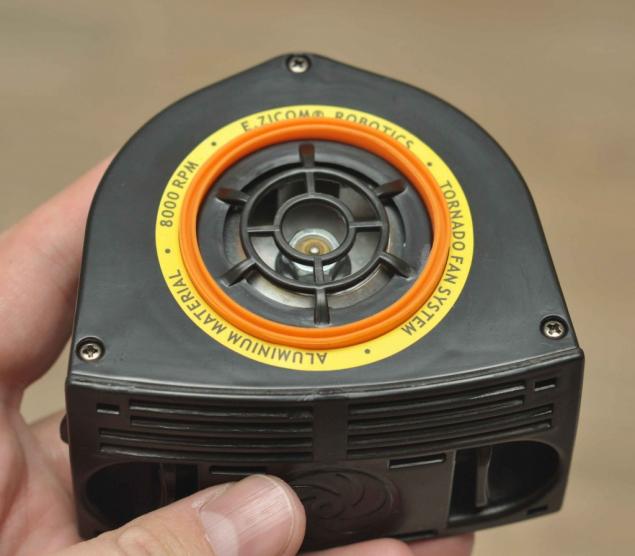
And here is the pump. Clearly visible turbine blades. Em>

Contact the pump for its power. em>
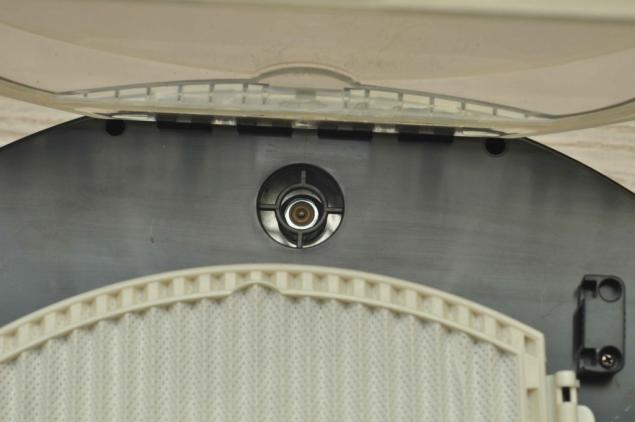
The air is drawn through a special filter. em>
As another feature of the cleaner is extended the microfiber cloth on the bottom of the robot. In this case, the robot does not only sweep and vacuumed, and rub floors. Importantly do not forget to moisten the cloth with water before cleaning cycle.
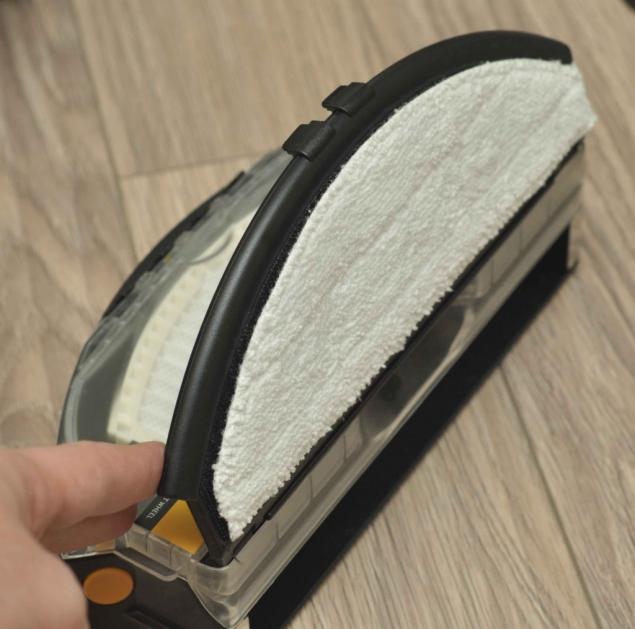
A nozzle with a microfibre cloth in theory allows you to remove even cleaner. em>
It is also appropriate to mention the design of the brush attachment. She is very reliable and durable because it uses metal based bearings.
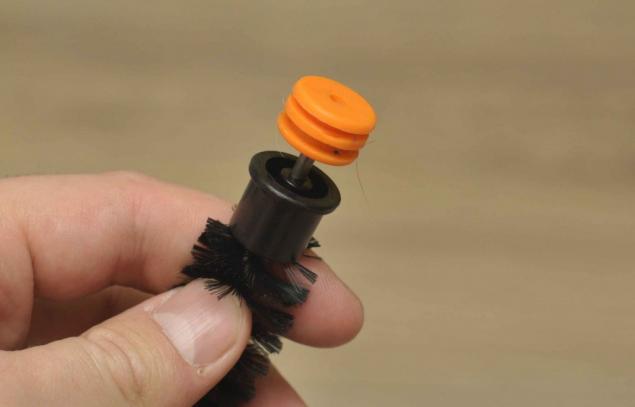
Support rubber brush. em>
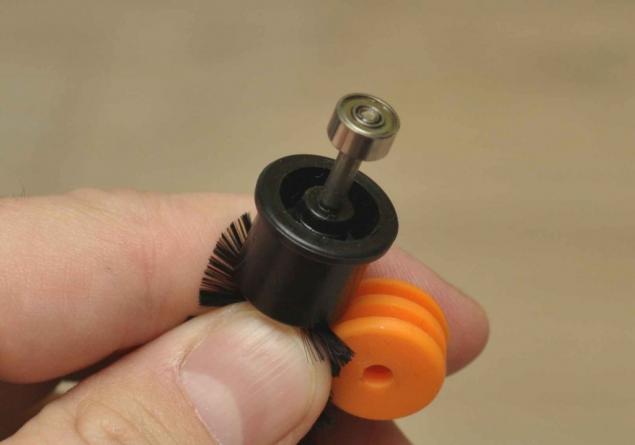
But underneath lies a rolling bearing. em>
The rest of the equipment of the robot is quite standard.

The robot is equipped with a belt optical sensors fleeing clashes with everyday items. em>
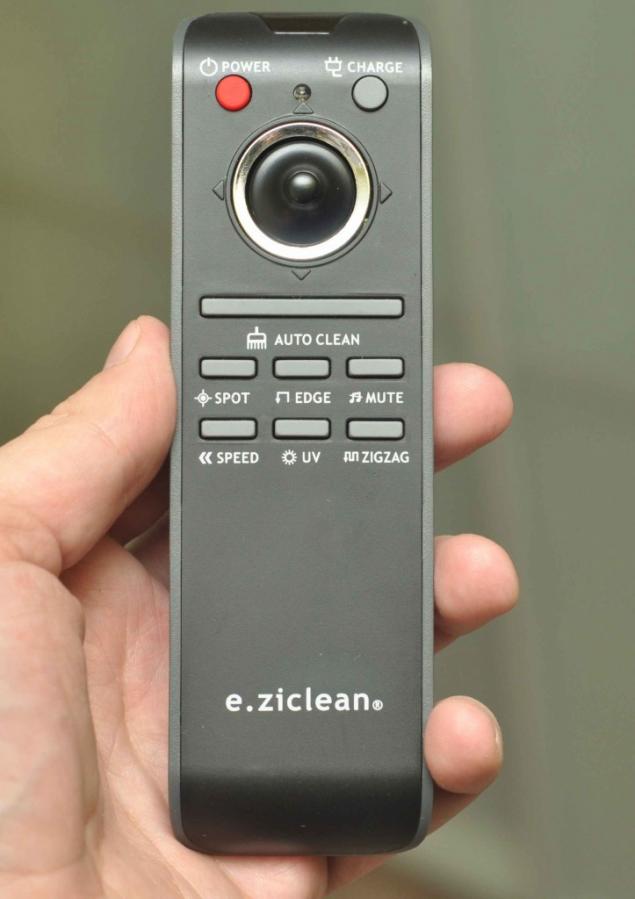
Remote convenient and informative. em>

But when you look at the display felt a little lack of readability, but in general there is no problem. em>
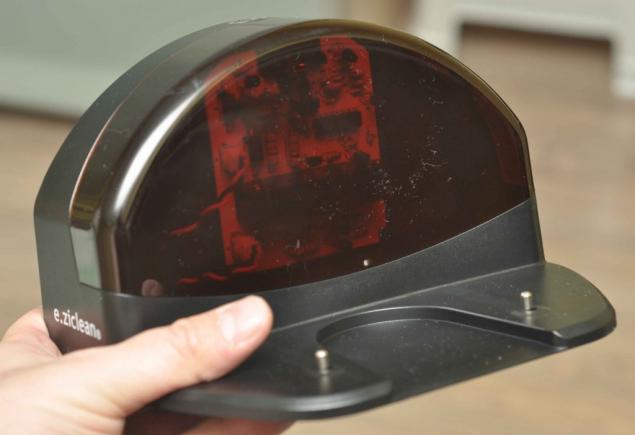
Charging base looks a bit extravagant. Translucent glass through which the visible electronic filling. Contacts for charging the vacuum push. Em>
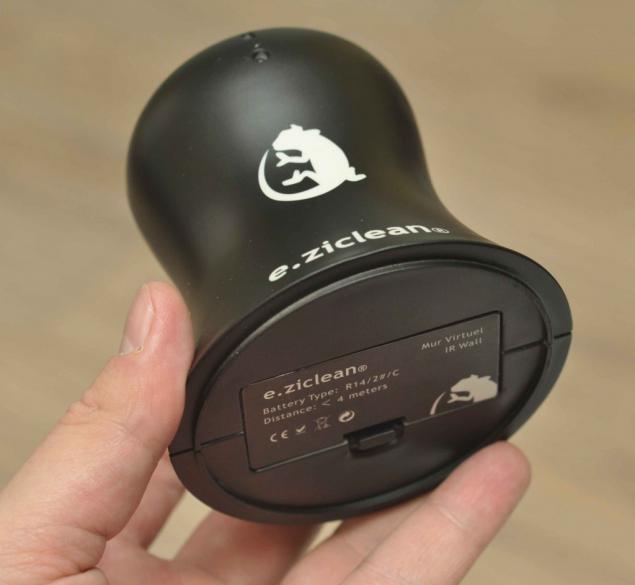
This device helps the machine does not start up there where he did not need to enter. em>
TEST PROCEDURE h3>
Based on the questions that were raised at the beginning of the article, as well as the position of the desired end result is obvious test program.
To the entire surface of the floor has been completely cleared of contamination, the robot must be endowed with the two main properties. First of all, it is a fundamental ability to collect all kinds of high quality household pollution. And the second - is the ability to navigate in the room and the entire cleaning plan for the area entrusted to left uncleared areas. It is these abilities, we will check the same name in two trials. Moreover, these considerations are valid for the vacuum cleaner of any structures.
To check the quality of the collection of dirt, we have prepared a small arena. Dimensions of this indicator to measure the role of special not play. What is important is the percentage of contaminants that the device is able to collect. Sami pollution we tried to simulate as close to real. Each house on the floor there is a fine dust - as she made meal - this is the hardest to collect dust. Often found debris larger type crumbs or sand street - take the rap for them sugar and bread crumbs. Of course, to get under the wheel can and does something specific, so we added spruce needles and pieces of paper. All this is mixed in roughly equal numbers and got 50 grams of the test mixture. Coins buttons and the like are relatively large objects we deliberately add to our "dirt" did not become (as do the testers other publications), because we are convinced that the robot cleaner is created is not to collect money and other useful things from your floor . Observe the composition of what you throw out a conventional vacuum cleaner, and understand what are the specifics of dirt collected from the floor - not coins.
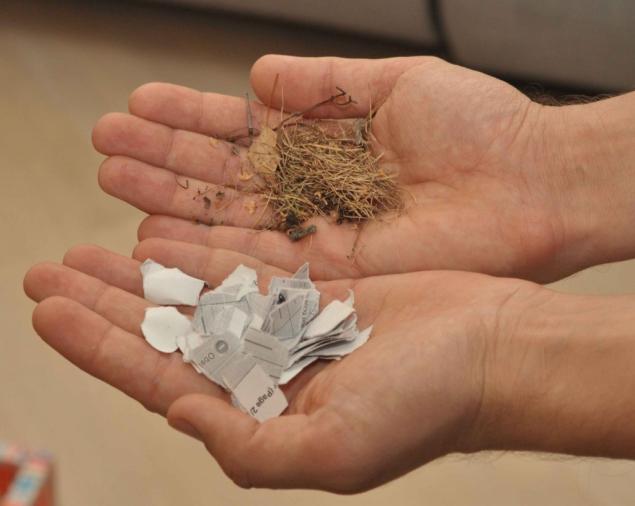
Raw materials for "hellish" mixture. em>
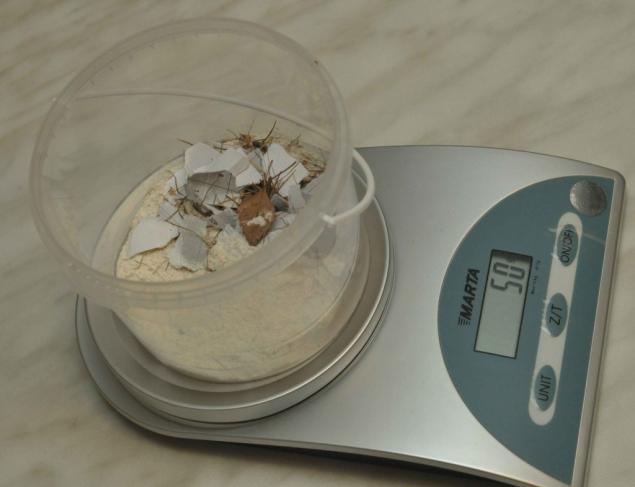
Total 50 grams on the "tender mercies" robot. em>
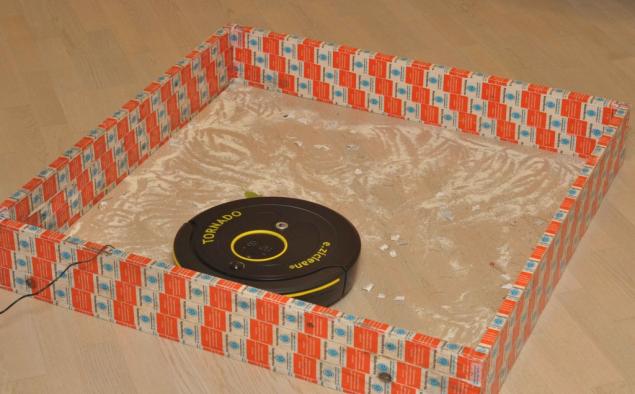
Evenly scatter the artificial dirt around the arena. Everything is ready for testing. Em>
Accordingly, having 50 grams at the start of conditional mud, we run the vacuum cleaner in the working cycle, after which weigh all that he was able to collect and determine the percentage of the collected dust. Immediately say, that the nature of this test depends on the navigation system of the robot. It may be able to move only along the trajectory of the chaotic - in this case it is provided for cleaning time 5 minutes. A can be provided with more advanced vision and as a result, clean the area consistently - then it will get out, until things take away. It will still be faster than 5 minutes, as the robot twice for one and the same place is not passing.
The second test aims to explore the predictive ability of the cleaner to clean maximum area. Hold it very difficult, so we have developed for this "marker" system of assessment. It lies in the fact that the four communicate with each other rooms (the rooms in the apartment) with a total area of 63 square meters. m., we randomly, but at the same time uniformly scatter pieces of paper. Start the robot in the working cycle and then count the number of pieces of paper collected. The result is the percentage of harvested area based on the assumption that if the robot will cover the entire area, it will bring together all the pieces and thus the likelihood that he will pass it only by the papers, do not remove the entire area, tends to zero.
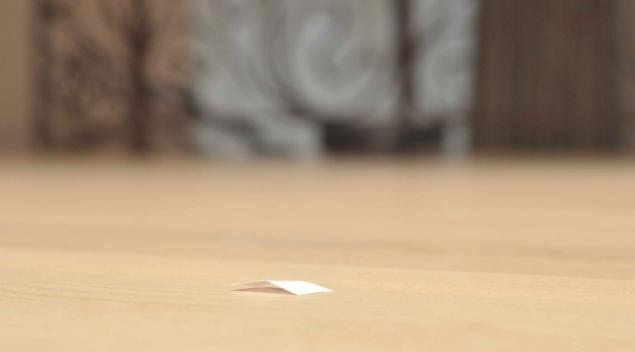
Measurement percent harvested area will be done through the number of collected pieces of paper. em>
The third exercise - overcoming barriers. Many in the apartment or house has porozhki laths or on the floor, so important is the ability to move the vacuum cleaner through them. As part of this test will check how our members are passable.
And fourth test is more of the nature of the show, however allows you to visually assess the physical processes occurring during operation of the robot. In other words, we tried to look inside the vacuum cleaner during the performance of their duties, to see whether the dust is absorbed. We did this by offering the robot to clean the glass. Photo and video shooting was carried out on the back side of the glass to make it right immediately clear whether those skeptics who believe such a category of robots commonplace Electros.
TEST №1. We are exploring the ability to collect POLLUTION h3>
Go directly to the practical tests. '50 Scatter dirt on our stage, run the robot on the 5-minute session and evaluates the results.
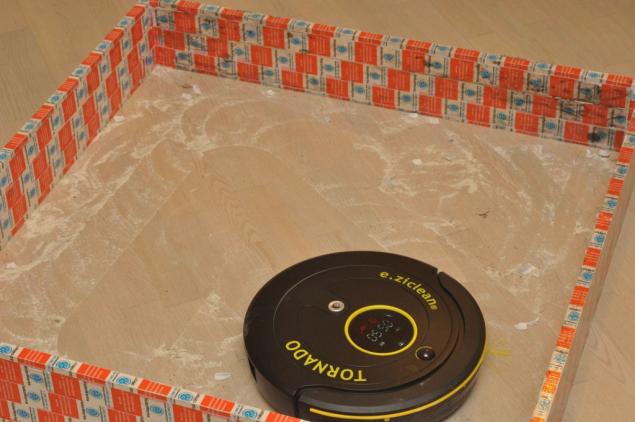
in the beginning of the harvest can be clearly seen, as dirt is absorbed steadily cleaner. em>
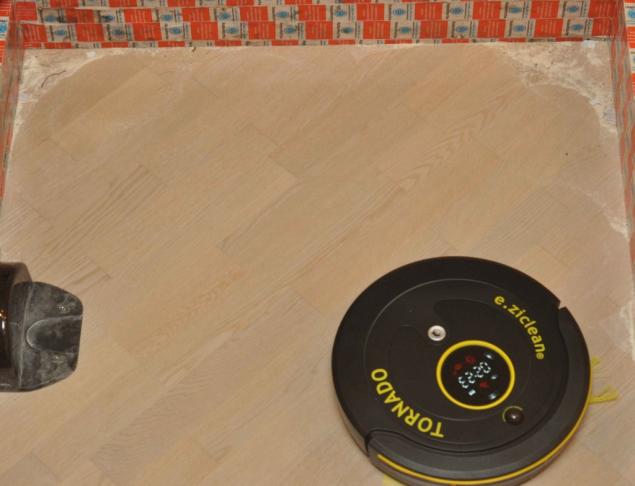
A general view of the surface of the crop cycle length after 5 minutes. em>
Before you assess the quality of harvest I will say a few words about the subjective impressions of the robot. Overall impression - it is really a vacuum cleaner. This is manifested in the disappearance of dust in real time, in a characteristic sound. And if you bring a hand to the back of the vacuum cleaner during operation, then clearly it felt powerful enough air flow - short Tornado called him on purpose. Moves the robot really randomly, but this chaos is very ordered and the device is not only fast, "covered" the entire area, but also tried to further extend along the walls. That is cleaner behaved reasonably and fully justified his robotic profile.
Now, actually, about the results of his work. The photo clearly shows that, overall, the main area is removed, but with the corners, there are some difficulties. Tornadoes are caused by the unwillingness to come close to the walls. As we noted in the survey portion on the front bumper positioned infrared distance sensors, which protect the vacuum cleaner from the collision with the furniture and various obstacles, and we thought that set them (or so says the software) rough, with a large margin, making the robot noticeably arrives to the walls. Long side brushes save, but not always. As a result, we have what we have.
Gently and carefully pour "the result of" in the bag, and weigh in the balance, after transferring them to the accounting regime is not packaging.
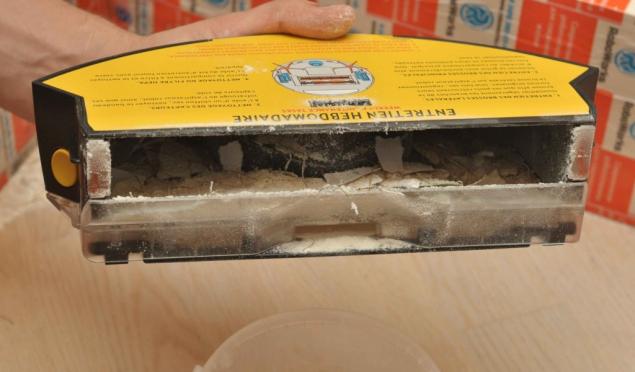
The container after the working cycle. Most of the contamination was inside. Em>
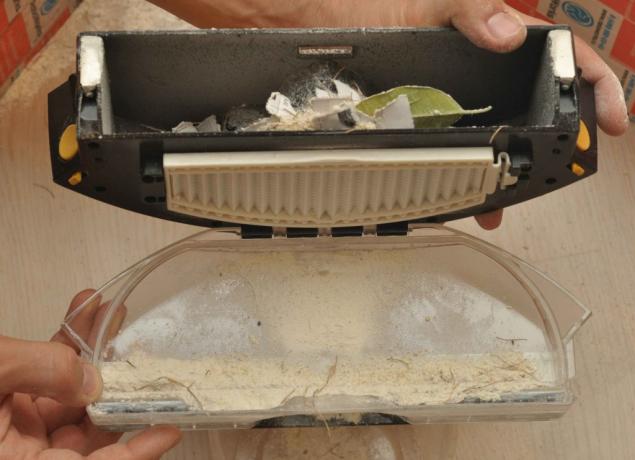
debris in a shallow bay, and a large bay - large and small, too .... em>
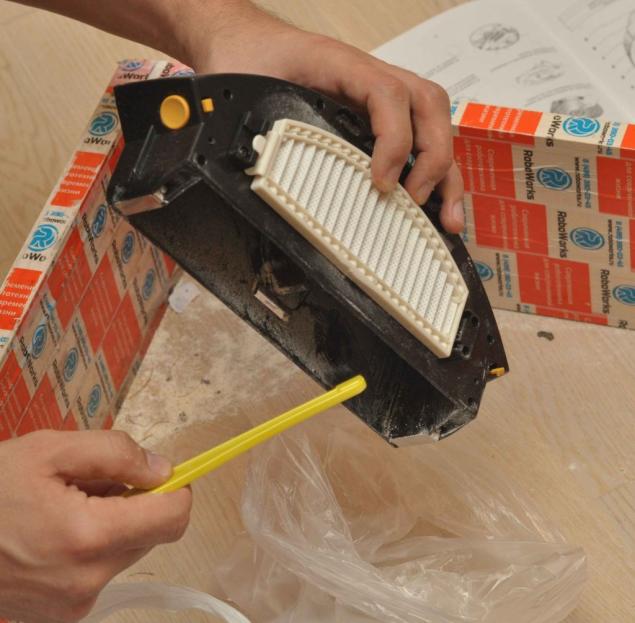
We gather dust for weighing. em>
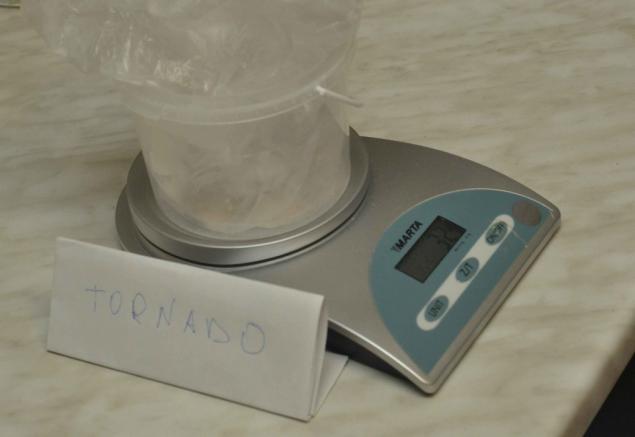
Get 32 grams, which is 64% of the originally scattered around the arena dirt. em>
In fairness, we dare all the scoop, which is not fortunate enough to be in the belly of the robot, and added to the total weight removed. The result was at first glance a little unexpected, but logical - 45 grams. Those.
Those.
The new series of office furniture, "the Sample" from "MebelStil"
Norvegіya viznana naykraschoyu kraїnoyu for Zhittya.































